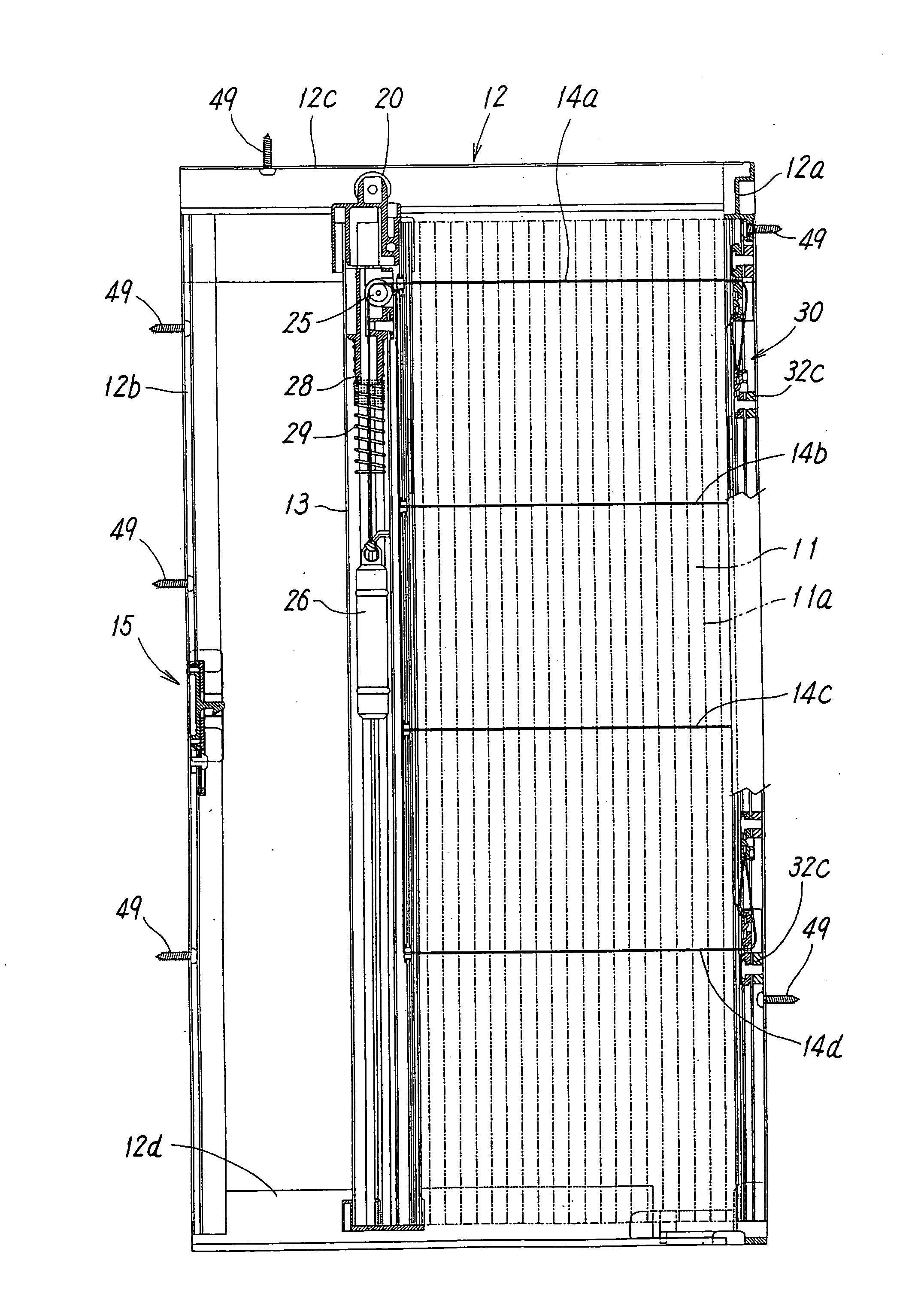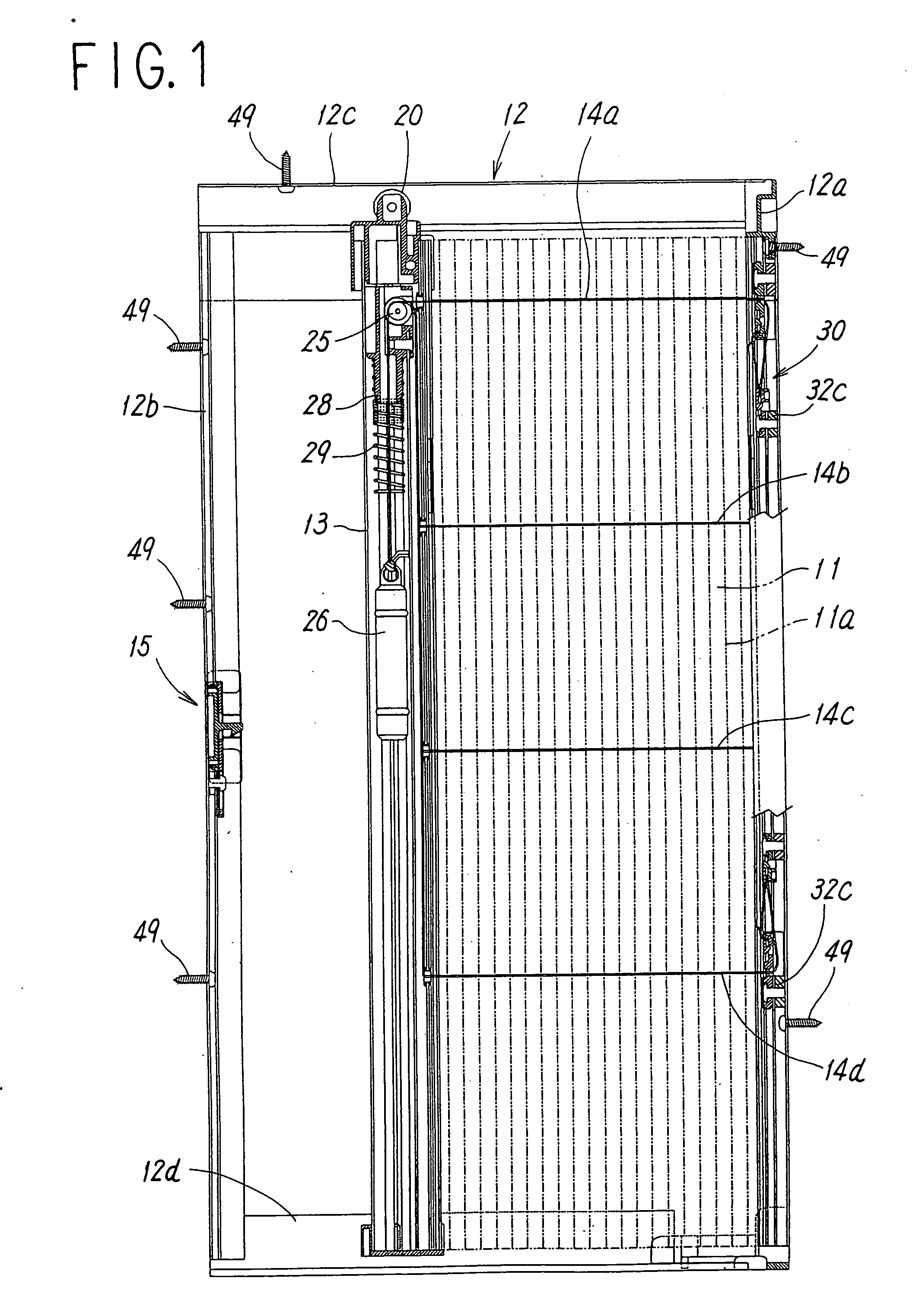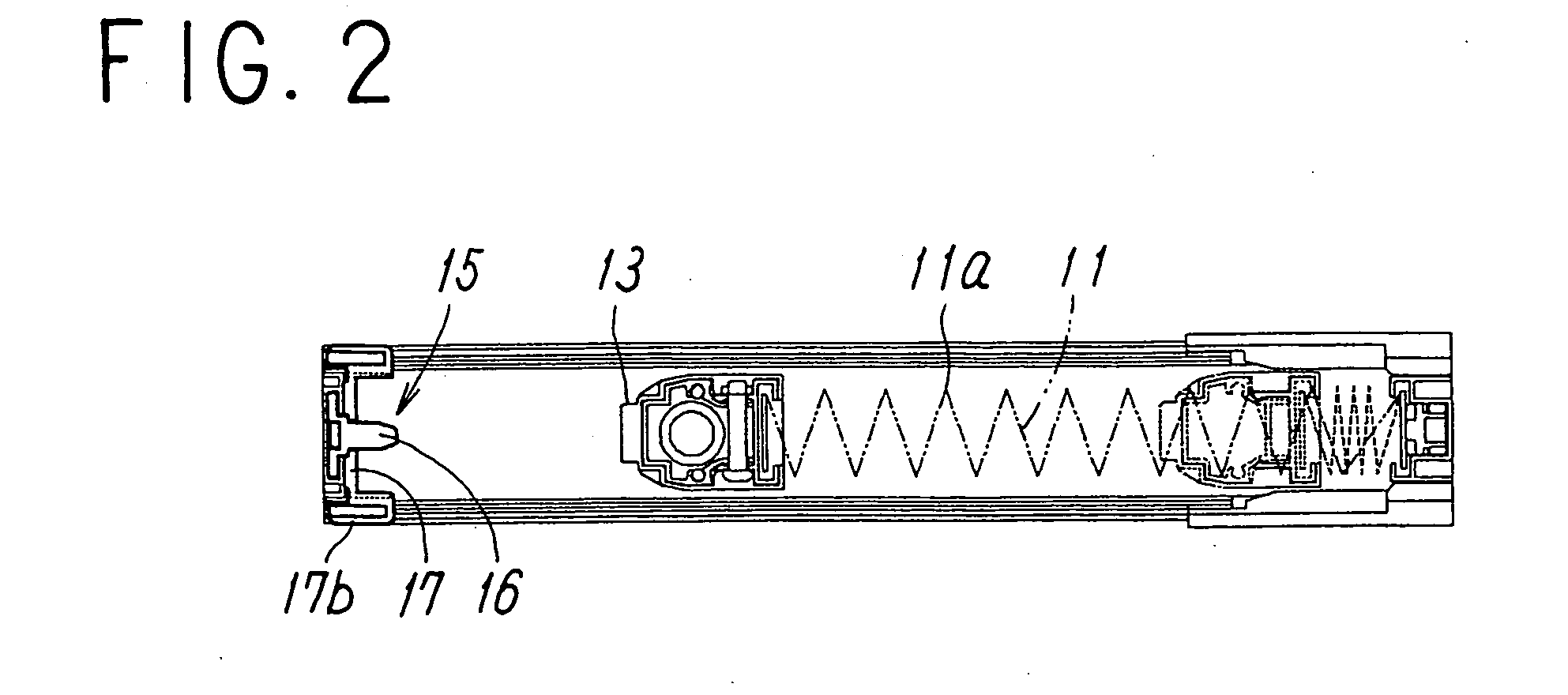Sliding screen door
a sliding screen and door technology, applied in the field of sliding screen doors, can solve the problems of abnormal doorframe movement, insufficient suppression of screen expansion due to wind or the like, and achieve the effect of suppressing screen expansion, easy adjustment, and increasing operating for
- Summary
- Abstract
- Description
- Claims
- Application Information
AI Technical Summary
Benefits of technology
Problems solved by technology
Method used
Image
Examples
Embodiment Construction
[0037]FIGS. 1 through 17 illustrate the embodiment of a ff with respect to the present invention.
[0038] The sliding screen door is constructed such that a screen 11 for protection from insects is configured to be free for opening and closing in the style of horizontal pulling in a frame member 12 fixed to an opening portion of a building. Further, the screen 11 for protection from the insects is configured to be free for expansion and contraction in the style of an accordion by means of alternately folding in reverse directions at the numbers of folded portions 11a which is in parallel with each other and is spaced at even intervals, as shown in FIGS. 1 and 2. The frame body 12 is constructed by mutually connecting each of a pair of vertical frame members, 12a and 12b made of aluminum or synthetic resin and upper and lower horizontal frame members, 12c and 12d, at four corners.
[0039] One end of the aforementioned screen 11 is fixed to one of the vertical frame members 12a of the a...
PUM
 Login to View More
Login to View More Abstract
Description
Claims
Application Information
 Login to View More
Login to View More - R&D
- Intellectual Property
- Life Sciences
- Materials
- Tech Scout
- Unparalleled Data Quality
- Higher Quality Content
- 60% Fewer Hallucinations
Browse by: Latest US Patents, China's latest patents, Technical Efficacy Thesaurus, Application Domain, Technology Topic, Popular Technical Reports.
© 2025 PatSnap. All rights reserved.Legal|Privacy policy|Modern Slavery Act Transparency Statement|Sitemap|About US| Contact US: help@patsnap.com



